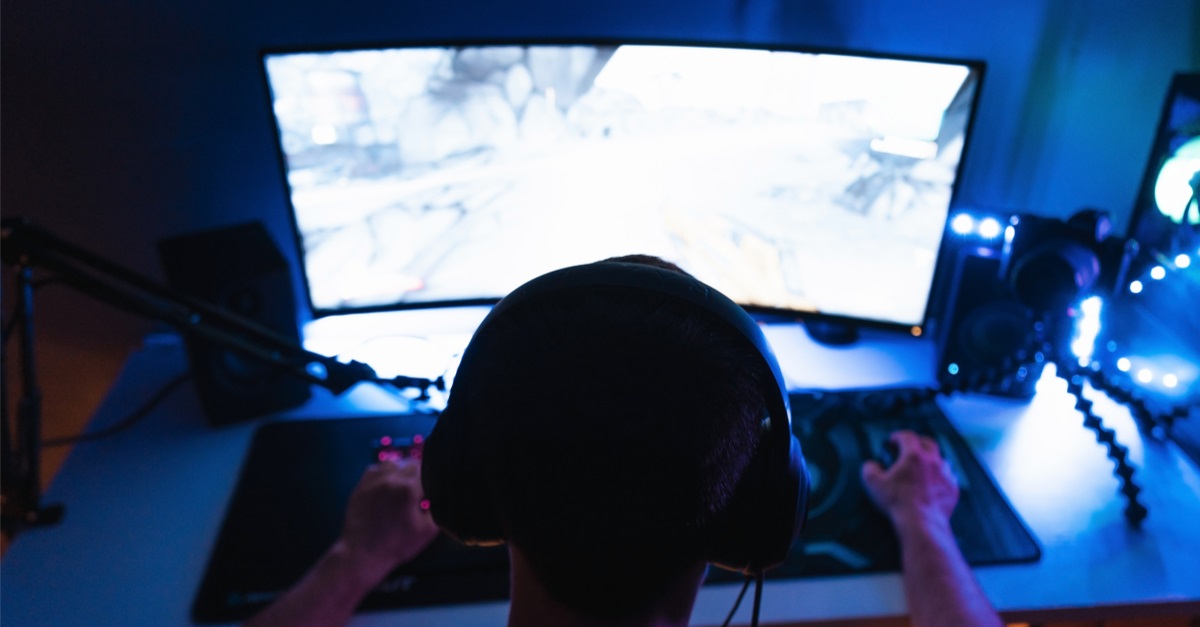Curved monitors are newer on the tech scene but have been dubbed super cool and futuristic. But what are the actual differences between curved and flat monitors? To make sure you’re using the best monitor for your purposes, read this piece to learn about the differences and similarities between the two kinds of monitors.
Before you upgrade to the hippest tech trend or settle for a boring standard monitor, read this first. You may be surprised to learn what the best option for you is. The monitors have significant benefits for different professions and user preferences.
Keep this guide handy when deciding which type of screen is ideal for your needs.
Similarities
The similarities between curved and flat monitors are generally obvious. Both are used with computer systems to display images, documents, and so much more. Both weigh about the same and work with most if not all computer systems.
They also both come in a range of sizes, usually between 18 and 35 inches. If you want to have a dual monitor setup this can work with both curved or flat monitors.
Differences
Here is a full rundown of the differences between curved and flat monitors. These are the factors to consider when buying a new screen, so you get the best one for your intentions.
Space
Many people think bigger is better, but this isn’t always true. Sometimes larger screens can hurt your eyes or be overwhelming when viewing images or videos.
Flat
Flat monitors offer far less real estate than curved monitors do. The sides of flat monitors actually push light past us, wasting some of the space on the desktop. Your eyes can’t take in the sides because they don’t enter your peripherals but stay in your line of vision, forcing you to scan the entire screen to absorb it.
Curved
The concave design of curved monitors makes it so the side of your screen enters your peripheral vision. This design allows you to take in more of your screen all at once. This creates a more immersive experience and also allows you to have more pages and apps open on your desktop that you easily see. Clicking between pages and documents can get tedious, and curved screens make it easier to keep everything visible at once.
Comfort
Staring at a computer screen for long hours takes a toll on your eyes. Research proves that the blue light emitted by computer and phone screens damages our eyes and brains, exhausting us mentally. But some designs are more comfortable on your eyes than other options.
Flat
Flat screens take more effort to scan because you can only use your central line of vision and not your peripherals. While this plays a role in desktop space, it also forces your eyes to work harder to take in information. Eye strain often lessens productivity and can lead to trouble sleeping or headaches.
Curved
The curved design of screens engages your peripheral vision, giving you a more immersive and complete viewing experience. Both gamers and office workers strain less when using curved monitors because your eyes don’t need to dart around the screen to take in the full picture of what is happening on your desktop. A curved screen can make long hours working or gaming much easier.
Ideal Uses
People may want to get a curved monitor to have a futuristic screen, but they aren’t ideal for all professions and uses. Below is a shortlist of the best uses for curved or flat monitors. Consider what you use your computer screen the most for.
Flat
- Video editing
- Digital design
- Photo editing
- Data comparison
Curved
- Gaming
- Game streaming
- Video calls and conferences
- Writing and reading
- Movie and television viewing
Price Point
When shopping for a monitor, you likely have a budget you want to stick to. Monitors come in a wide range of sizes and prices, but this section will give you a general idea of how much you should pay.
Flat
Flat monitors have been around much longer than curved ones, therefore have become more affordable and accessible to people. Flat monitors range in size, averaging between 19 inches and 35 inches.
For a 20-inch flat monitor, you can expect to pay about $200, depending on the quality, manufacturer, and specs.
Curved
Curved monitors are more of a hot commodity than flat screens, so they tend to cost more. That isn’t to say that you can’t get an affordable curved monitor, but it will be harder to find. You should expect to pay around $350 for a quality 24-inch curved monitor.
You can get curved monitors in the same sizes as flat monitors, but many people choose to get larger curved monitors for a better gaming experience.
Conclusion

Flat and curved monitors each have their own benefits and work better for different people and computer users. For gamers, it is undeniable that curved monitors offer a more immersive and intense gaming experience as well as relieve discomfort in your eyes.
But flat monitors shouldn’t be dubbed as dinosaurs just yet, they are still useful and for some professions, completely necessary. Don’t be tempted by the hot new tech item if it isn’t best for your needs and don’t box yourself into flat screens. The curved monitor could change your life.
Consider everything in this guide when deciding which type of monitor is best for you, and make sure you make an informed decision.
FAQs
Which type of monitor will last longer?
Both monitors should last between seven and ten years. Monitors should outlast your computer systems and towers, as they don’t use as much processing power as the computer systems do.
Does one monitor run more efficiently than the other?
If you buy a quality monitor, it should work just fine. Both curved and flat monitors should flawlessly display images and videos from your computer system.